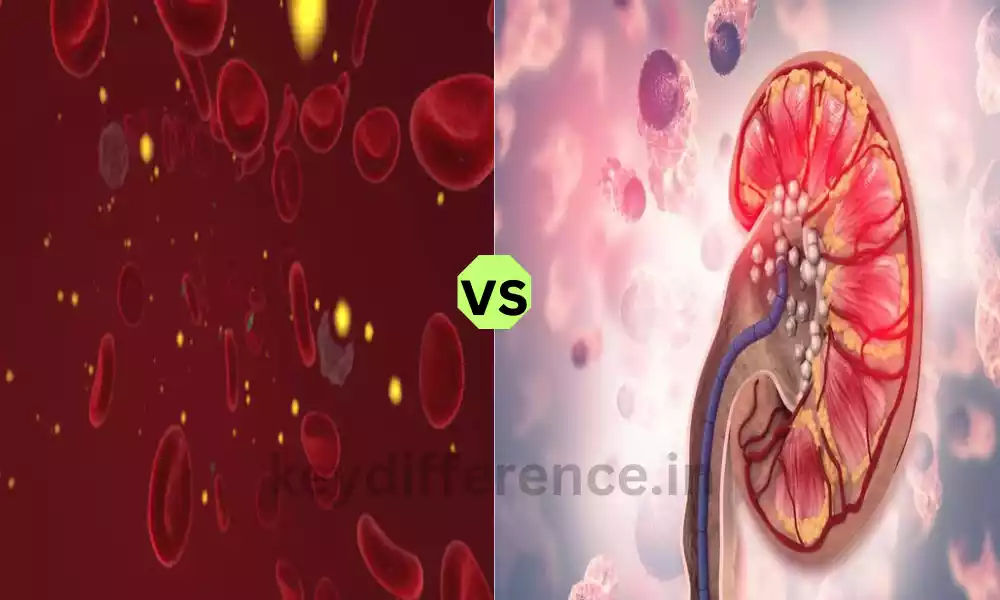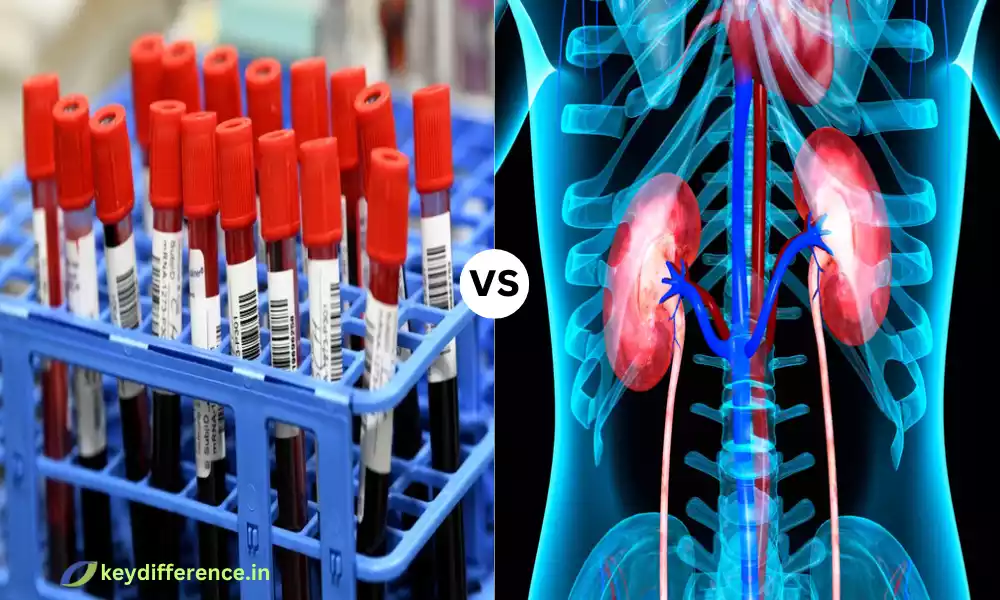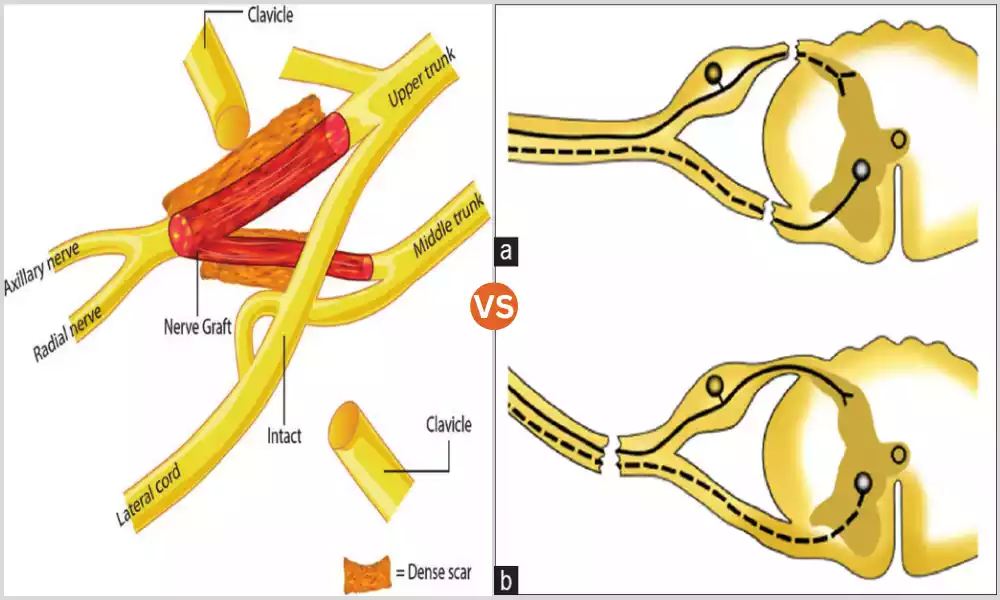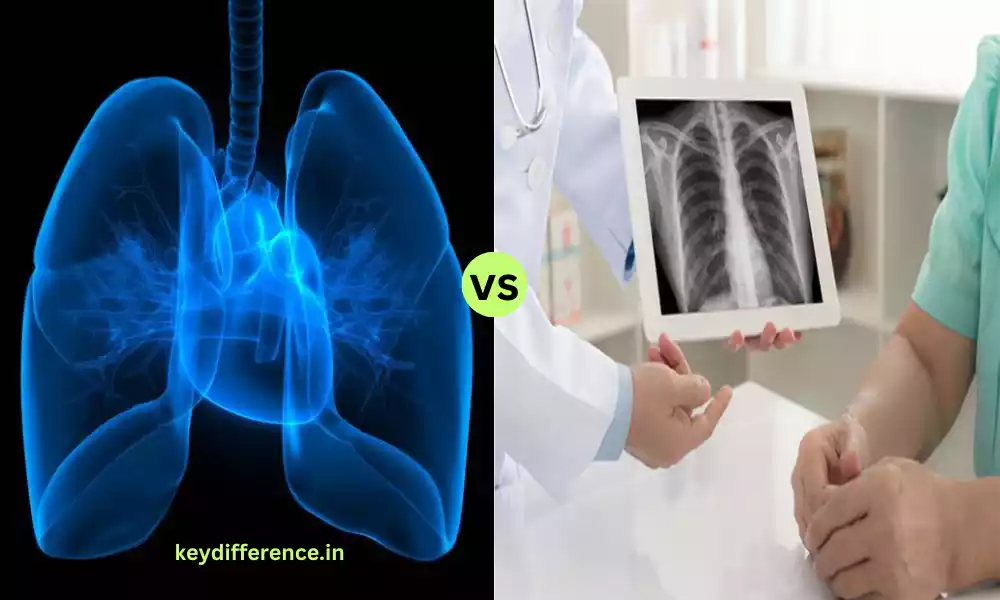“In a world characterized by constant change and boundless curiosity, the quest for knowledge is an enduring pursuit. Reference books stand as beacons of information, offering insights, facts, and wisdom across a multitude of disciplines.
In this brief exploration, we delve into the world of reference books, each a gateway to a realm of understanding, from the sciences to literature, technology to philosophy. Join us on a journey through the pages of knowledge, where each book unlocks a new facet of our complex universe.”
Definition of Allodynia
Allodynia is a condition of the brain that is defined by the perception of discomfort or pain when exposed to normal harmless stimuli or ones that typically cause less discomfort.
This happens when something that isn’t supposed to be uncomfortable, like an easy touch or mild breeze, is perceived as unpleasant or painful. The increased sensitization to stimuli that aren’t painful is characteristic of allodynia.
It can greatly impact the quality of life of an individual especially when they have chronic pain issues that can be linked to the condition.

Definition of Hyperalgesia
Hyperalgesia is a neurologic condition that is characterized by an exaggerated more intense sense of pain reaction to normally painful stimuli or those which typically trigger moderate discomfort.
Hyperalgesia, in essence, is an increase in the sensitivity to painful sensations, which causes the sensations to feel more severe and intense than they would in an individual who is not suffering from the condition.
Hyperalgesia can manifest in a variety of circumstances, including acute pain or chronic pain conditions or due to some medical treatment. The increased sensitivity to pain is typically due to adjustments in our nervous system’s response to pain signals, especially via mechanisms like central and peripheral sensitization.

Comparison Table of Allodynia and Hyperalgesia
Here’s a comparison table highlighting the key differences between allodynia and hyperalgesia:
| Characteristic | Allodynia | Hyperalgesia |
|---|---|---|
| Definition | Perception of pain in response to non-painful stimuli or normally non-painful sensations. | Exaggerated perception of pain in response to typically painful stimuli or heightened pain intensity. |
| Sensory Experience | Pain is felt when it shouldn’t be, such as a light touch or a gentle breeze. | Pain is more intense than expected in response to normally painful stimuli. |
| Types | Dynamic Allodynia: Pain due to dynamic stimuli like brushing the skin. Mechanical Allodynia: Pain caused by mechanical stimuli like pressure or touch. Thermal Allodynia: Pain induced by temperature changes. | Primary Hyperalgesia: Increased pain sensitivity at the site of injury. Secondary Hyperalgesia: Increased pain sensitivity beyond the injury site. |
| Mechanisms | Nociceptive input amplification Peripheral and central sensitization Neural plasticity | Peripheral sensitization Central sensitization Neuroinflammation |
| Common Conditions | Fibromyalgia Migraines Complex regional pain syndrome (CRPS) Neuropathic pain | Postoperative pain Neuropathic pain Inflammatory conditions Cancer-related pain |
| Diagnosis | Based on patient-reported symptoms and clinical evaluation. May involve specialized sensory testing. | Based on patient-reported symptoms and clinical evaluation. May involve sensory testing and assessment of pain responses. |
| Treatment Approaches | Medications targeting neuropathic pain mechanisms Physical therapy Lifestyle modifications | Medications targeting underlying causes Physical therapy Lifestyle modifications Addressing the source of pain |
| Prognosis | Can vary depending on the underlying condition but may be chronic. | Depends on the cause and underlying condition, with the potential for improvement if the cause is addressed. |
| Role in Chronic Pain | Common in various chronic pain conditions, particularly neuropathic pain. | Often associated with acute and chronic pain states, contributing to pain severity. |
This table provides a concise overview of the primary differences between allodynia and hyperalgesia, including their definitions, sensory experiences, types, underlying mechanisms, commonly associated conditions, diagnosis, treatment approaches, prognosis, and their roles in chronic pain.
Importance of distinguishing between Allodynia and Hyperalgesia
The distinction between hyperalgesia and allodynia is vital in the area of pain medicine as well as clinical practice due to a variety of reasons:
- Accurate Diagnosis and Treatment Planning:
- Being able to determine if a patient suffering from hyperalgesia or allodynia can help medical professionals to make an accurate diagnosis. This will help guide the treatment decision.
- The distinction between these two types of conditions allows healthcare specialists to develop treatment plans that are specifically tailored to address the mechanisms and triggers of the pain.
- Selection of Appropriate Interventions:
- Hyperalgesia and Allodynia might require different treatment strategies. For instance, drugs and treatments that focus on central sensitization might be better suited for hyperalgesia, whereas those dealing with peripheral sensitization could be more appropriate for allodynia.
- Knowing the condition that is present will allow you to choose the most effective strategies for managing pain and can help reduce unwanted treatments and negative side consequences.
- Improved Patient Outcomes:
- Being able to recognize and manage hyperalgesia and allodynia can result in improved outcomes for patients which include improved pain relief, a better quality of life and improved functional capabilities.
- A misdiagnosis or confusion between two conditions could lead to uncontrolled pain, long-term suffering, and even frustration for patients.
- Prevention of Progression:
- Addressing hyperalgesia and allodynia in the earliest stage will help to delay the progression of painful ailments. Early intervention can help stop the chronic discomfort from getting extreme and difficult to control.
- Research and Clinical Trials:
- The ability to accurately diagnose and differentiate is crucial in clinical trials and studies on pain. Knowing the distinctive characteristics of hyperalgesia and allodynia are essential to develop efficient treatment and interventions.
- Patient Education:
- Informing patients about the cause the cause of pain regardless of whether it’s hyperalgesia or allodynia can assist in managing their expectations and increase their compliance with treatment regimens. This empowers them to be involved in their own healthcare.
- Avoiding Opioid Overuse:
- In light of the current opioid crisis, the distinction between allodynia and hyperalgesia may help to prevent the unnecessary use of opioids and reduce the risk of addiction and misuse.
- Precision Medicine:
- In the age of precise medicine, adjusting treatment to the individual patient is becoming increasingly crucial. Differentiating between hyperalgesia and allodynia helps to create more individualized and efficient pain management strategies.
The distinction between hyperalgesia and allodynia is crucial for a precise diagnosis and treatment that is targeted, improving outcomes for patients and advancement in the field of the management of pain. It helps healthcare providers offer more efficient focused, patient-centered care. It also helps reduce the burden of suffering from pain.
Common Conditions Associated with Allodynia
Allodynia is a sensation that causes pain or discomfort felt in response to harmless stimuli. It can be experienced in a variety of circumstances, but it is most common in those that cause nerve damage or changes to the processing of pain.
Here are a few of the most common conditions related to allodynia:
- Fibromyalgia: Fibromyalgia is a chronic pain affliction that is characterized by a wide range of musculoskeletal pain the feeling of fatigue and tenderness in certain areas. Allodynia is the most common sign of fibromyalgia sufferers who experience even slight pressure on their skin that causes discomfort.
- Migraines: Patients suffering from migraines often have cutaneous allodynias during migraine attacks. It means a gentle contact or brushing of the hair can increase the intensity of their headaches. This type of situation tends to happen in the initial stage of migraine.
- CSS0_ Regional Pain Syndrome (CRPS): The CRPS condition is a chronic pain condition that is usually triggered through trauma or an injury. Allodynia may be a significant aspect, and those suffering might find that even the slightest breeze or movement of the limb affected is painful to the point of excruciating.
- Neuropathic pain: Neuropathic pain, resultant from dysfunction or damage in the nerve system usually manifests with allodynia. Disorders like postherpetic neuralgia, diabetic neuropathy (shingles), and nerve entrapment syndromes can contribute to heightened sensitization to pain.
- Central Sensitization Disorders: conditions that are associated with central sensitization. In these conditions, the central nervous system of central nerves is hypersensitive to signals of pain and may be accompanied by allodynia as a sign. This could be caused by chronic fatigue (CFS) and IBS or irritable bowel syndrome. (IBS).
- Postoperative pain: Following specific surgical operations, patients may experience allodynia near the surgical area, and even a gentle touch or contact could cause pain.
- Sclerosis (MS): MS is an autoimmune disease with a central nervous system. Allodynia is a sign of MS, usually a result of central demyelination as well as nerve dysfunction.
- Chemotherapy-induced Peripheral neuropathy (CIPN): Some cancer patients who undergo chemotherapy suffer an allodynia-like reaction as a side effect. The condition affects peripheral nerves, resulting in an increased sensitivity to touch and temperatures.
- Phantom Limb Pain: Those who have had amputations might experience a feeling of allodynia in their remaining limb or the phantom limb. The pressure applied to or on the limb that is not yet used may cause pain.
- Post-Traumatic Stress Disorder (PTSD): Some people suffering from PTSD may suffer from allodynia because of increased stress response that affects the perception of pain.
It’s crucial to recognize that allodynia may be an intricate symptom that may not be the case in all cases. Recognizing and treating the root problem or underlying cause is vital to ensure the proper management of pain in patients suffering from allodynia.
Amplified pain perception in hyperalgesia
Hyperalgesia with amplified pain perception is a term used to describe an increase in the sensitivity of pain-inducing stimuli, which results in an exaggerated and heightened sensation of pain. For people with hyperalgesia, the sensation of pain is more intense and significant than in those who are not affected when exposed to normal painful stimuli.
The increased pain response may be experienced in a variety of situations that include acute pain as well as chronic pain disorders or in response to specific medical treatments.
The mechanisms behind the increased pain perception that occurs in hyperalgesia result from modifications in the way that the nervous system processes signals of pain, particularly through central and peripheral sensitization
- Peripheral Sensitization: In cases that have peripheral sensitization, there’s an increased sensitivity in the area of inflammation, or tissue damage. The nociceptors (pain receptors) are more responsive to stimuli which results in a decrease in the threshold for pain. This means that pain-inducing stimuli cause more pain signals from peripheral nerves.
- Central Sensitization: Central sensitization happens as the central nervous system (the brain and spinal cord) is heightened in response to the pain signal. It can result in an amplified perception of pain throughout the body, including regions that are not near the original injury location. Central sensitization causes the brain’s perception of pain signals to change and pain is perceived as more intense and lasts longer.
Hyperalgesia with an amplified sense of pain can have a major impact on the level of living, as any minor injury or painful triggers can cause severe discomfort. It’s a frequent occurrence of a variety of pain-related ailments, such as postoperative pain, neuropathic pain, and inflammation-related conditions.
Understanding and understanding the mechanisms that cause hyperalgesia is essential for efficient pain management and improving the overall well-being of those affected.
Multimodal and Individualized Approach
A multimodal, individualized treatment for pain is a complete strategy that considers the individual needs and situations of each patient while using various therapies and interventions to treat their pain efficiently.
This approach acknowledges the fact that pain is a subjective and subjective experience that can be influenced by many factors, including the nature and cause of the pain as well as the medical history of the patient, the psychological aspects, and individual preferences.
This article will provide a brief overview of what this method entails:
- Comprehensive Assessment:
- Take a thorough look at the pain of the patient The patient’s pain should be assessed for location, intensity duration, as well as its effects on daily activities.
- Take note of the patient’s medical history including the conditions that caused it, as well as any prior treatment.
- Examine the psychological and social causes that could be contributing to the feeling of pain like depression, anxiety, or social support.
- Patient-Centered Care:
- Partner with the patient in order to determine realistic goals for pain management and expectations.
- Include the patient in decision-making regarding treatment by ensuring that their wishes and preferences are taken into consideration.
- Maintain open dialogue between the healthcare professional and patient, allowing them to adjust the treatment plan if needed.
- Multimodal Treatment:
- Mix multiple treatment options to tackle pain from different perspectives. This could include physical, pharmacological, and complementary treatments.
- The options for pharmaceuticals include things such as analgesics anti-inflammatory medications and neuropathic pain drugs.
- Physical therapies may include physical rehabilitation, exercise, and methods like cold or heat therapy.
- Psychological treatments such as cognitive-behavioral therapy (CBT) and mindfulness and relaxation techniques are great ways to reduce anxiety and stress related to pain.
- Alternative therapies such as acupuncture massage, acupuncture, or chiropractic therapy can also be integrated depending on the individual’s preferences and requirements.
- Individualized Pain Management Plan:
- Customize the treatment plan according to the patient’s unique conditions and pain.
- Change the treatment plan as required in response to the patient’s responses to treatment as well as the changes to their discomfort.
- Take into consideration the lifestyle of the patient working, personal, and other elements when designing the strategy.
- Regular Monitoring and Follow-Up:
- Monitor the patient’s progress and reaction to treatment.
- Adjust the treatment plan in accordance with the current assessment.
- Offer education and support to help patients manage their pain during visits to healthcare.
- Holistic Care:
- Take care to address not just the physical aspect of pain, but also the psychological as well as the spiritual, social, and aspects that can aid in the well-being of the patient.
- Promote a healthy lifestyle that includes exercise, diet, and stress-management techniques.
- Pain Education:
- Inform the patient about the cause of their pain, possible causes, and treatment options.
- It is important that the patient knows about the dosage of their medication and any potential negative side effects or dangers.
- Prevention and Early Intervention:
- Concentrate on preventing the onset of chronic pain whenever it is it’s possible.
- Make early interventions to reduce the effects of acute pain, and decrease the chance of it developing into chronic.
If they adopt a multimodal, individualized approach to managing pain Healthcare professionals can improve the relief of pain and enhance the quality of life for their patients by realizing that no one treatment method is suitable for all patients and that a comprehensive understanding of pain is crucial to provide effective treatment.
Reference Books
Certainly! Here are some reference books across various fields of knowledge that have been widely acclaimed and can serve as valuable resources:
Science and Medicine:
- “The Emperor of All Maladies: A Biography of Cancer” by Siddhartha Mukherjee – Provides a comprehensive history and understanding of cancer.
- “The Immortal Life of Henrietta Lacks” by Rebecca Skloot – Explores the impact of Henrietta Lacks’ cells (HeLa cells) on medical research and ethics.
- “Sapiens: A Brief History of Humankind” by Yuval Noah Harari – Offers a thought-provoking look at the history and impact of Homo sapiens on the world.
- “The Brain That Changes Itself: Stories of Personal Triumph from the Frontiers of Brain Science” by Norman Doidge – Examines neuroplasticity and its implications for understanding the brain’s capabilities.
- “The Gene: An Intimate History” by Siddhartha Mukherjee – Explores the history and science of genetics and gene research.
Technology and Computing:
- “The Innovators: How a Group of Hackers, Geniuses, and Geeks Created the Digital Revolution” by Walter Isaacson – Chronicles the history of computing and innovation.
- “Clean Code: A Handbook of Agile Software Craftsmanship” by Robert C. Martin – Focuses on writing clean, maintainable code in software development.
- “Introduction to the Theory of Computation” by Michael Sipser – A classic textbook on theoretical computer science and the theory of computation.
- “The Pragmatic Programmer: Your Journey to Mastery” by Andrew Hunt and David Thomas – Offers practical advice for software development professionals.
Literature and Fiction:
- “To Kill a Mockingbird” by Harper Lee – A classic novel exploring themes of racial injustice and moral growth in the American South.
- “1984” by George Orwell – A dystopian novel that remains relevant for its exploration of surveillance and authoritarianism.
- “The Great Gatsby” by F. Scott Fitzgerald – An exploration of the American Dream and excess in the 1920s.
Conclusion
A wide and extensive assortment of references could be a valuable resource for enhancing our understanding and knowledge of our world. If you are interested in sciences and medicine technology and computing, literature and the novel as well as politics and history, or even psychology and philosophy they provide insight knowledge, perspectives, and insights that remain to inform our understanding of the universe and our role within it.
The quest for knowledge through reading is a lifetime endeavor and reference books are a strong base on which to build a better knowledge of our complexities and constantly changing world.







